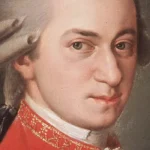Johann Sebastian Bach stands as a towering figure in the landscape of Western classical music, his compositions echoing through centuries and leaving an indelible mark on musical history. Renowned for their technical brilliance and emotional depth, Bach’s works allow listeners to traverse an expansive range of human experiences. To truly understand the essence of Bach is to delve into the intricate tapestry of Baroque music—a genre characterized by ornamentation, contrast, and expressive unity. In this exploration of Bach’s life and legacy, we will uncover the layers of his influence, innovation, and cultural impact, ensuring that his music remains a beacon of artistic integrity and emotional profundity.
The Musical Dynasty of Bach
Bach’s journey into the world of music was profoundly influenced by his lineage, nestled within a family with a rich musical heritage. The Bach family was not merely a collection of musicians but rather a dynasty that spanned over three centuries, cultivating an environment steeped in musical tradition. This familial background imbued Johann Sebastian with a sense of duty to uphold and innovate within this artistic realm, setting the stage for his remarkable contributions to music.
A Family Steeped in Tradition

The roots of the Bach family can be traced back through numerous generations of musicians. Each member contributed to a growing legacy that set a high standard for artistry and craftsmanship in music.
This strong foundation provided young Johann with unparalleled access to an array of musical styles and techniques, facilitating the development of his unique voice. From an early age, he was surrounded by the sounds of instruments, song, and the performance of sacred music, which would ultimately shape his creative vision.
Beyond just exposure, the collaboration among family members fostered a culture of learning and experimentation. Johann followed in the footsteps of his relatives, absorbing their teachings while simultaneously seeking to carve out his identity in a competitive musical landscape. This blending of influences would later manifest in his complex and intricate compositions, where tradition met innovation.
The Duty to Uphold a Legacy
As Bach matured into a composer and musician, he felt a profound sense of responsibility to honor the traditions of his forebears. This commitment drove him to explore new territories within the realm of music, leading to groundbreaking innovations that would redefine the essence of composition.
In many ways, this duality of respect for tradition and pursuit of personal expression defined much of his work. He engaged with established forms such as fugues and cantatas, adding his distinctive touch while still paying homage to those who came before him. This balancing act illustrates the complexity of Bach’s artistry, revealing how he navigated the fine line between reverence and originality.
The legacy of Bach’s family served as both a blessing and a challenge. While it provided him with a deep well of inspiration, it also raised expectations and created standards against which his work would be compared. In rising to meet these challenges, Bach ultimately forged a unique path that would earn him a place as one of the greatest composers in history.
The Personal Journey of Innovation
Bach’s evolution as a composer was not solely shaped by external influences; his personal experiences and struggles significantly informed his musical output. The trials he faced throughout his life—such as the loss of family members and professional setbacks—deeply impacted his emotional landscape, infusing his compositions with raw human experience.
This interplay between personal adversity and creative expression allowed Bach to craft music that resonated deeply with audiences. His ability to channel emotions into sound is perhaps one of his most extraordinary gifts. Within the context of his family’s musical legacy, Bach transformed pain into beauty and sorrow into transcendence.
This personal journey of innovation serves as a reminder that true artistry often arises from the depths of shared human experiences. Bach’s work continues to inspire countless musicians, inviting them to explore the intersections of tradition and individual expression, thus perpetuating the cycle of musical legacy he so passionately embodied.
Compositional Mastery and Innovation
Bach’s works are not only a celebration of musical beauty but also a testament to compositional mastery and innovation. His ability to weave together disparate musical lines into cohesive wholes showcases a profound understanding of counterpoint, precision, and spiritual fervor.
The Art of Counterpoint
One of the hallmarks of Bach’s genius lies in his mastery of counterpoint—the art of combining distinct melodic lines in a harmonically pleasing manner. His compositions often feature intricate interweaving melodies that converse with one another, creating a rich tapestry of sound.
In pieces like The Well-Tempered Clavier and Mass in B minor, Bach demonstrates a remarkable ability to manipulate musical themes and motifs, allowing them to evolve organically. These works serve as prime examples of how he skillfully navigated the complexities of counterpoint, providing an engaging listening experience that invites reflection.
Counterpoint acts as a conversation between melodies, transforming the act of listening into an interactive experience. For audiences, each note becomes a word in a dialogue, conveying emotions, thoughts, and revelations that resonate on a deeper level. Through his innovative approach to counterpoint, Bach elevates music to a form of communication that transcends language itself.
The Architectural Design of Sound
Bach’s approach to music can be likened to that of an architect designing a grand cathedral. Each note is meticulously placed, contributing to an overarching structure that guides the listener toward a higher plane of consciousness.
This architectural philosophy manifests in numerous ways throughout his body of work. Just as a cathedral features soaring arches and intricate stained glass, Bach’s compositions reveal layers of complexity that invite exploration. Listeners embark on a journey through time and space, experiencing a wide spectrum of emotions along the way.
Indeed, the spatial quality of Bach’s music allows listeners to feel as if they are ascending toward something greater than themselves. The rise and fall of melodies mimic the ebb and flow of life, encouraging introspection and spiritual connection. In this way, Bach’s music serves as a conduit for transcendent experiences, enabling individuals to explore their inner selves and connect with the cosmos.
Emotional Depth and Spiritual Resonance
Beyond technical proficiency, Bach’s music possesses a profound emotional depth that speaks to the human experience. His compositions reflect a balance between intellect and emotion, seamlessly blending mathematical precision with spiritual fervor.
Within his sacred works, such as the St. Matthew Passion and the Christmas Oratorio, Bach poignantly captures the complexity of faith and devotion. The intertwining melodies convey a sense of longing, joy, and sorrow, evoking powerful emotional responses from listeners.
This emotional resonance is rooted in the genuine spirit of Bach’s artistry. By investing his personal experiences into his music, Bach invites listeners to journey alongside him, exploring themes of love, loss, redemption, and hope. His ability to translate the profundity of human emotion into sound cements his status as a masterful composer whose work transcends time and cultural boundaries.
Cultural Impact and Interpretation
Bach’s influence extends far beyond the confines of the classical music world. His compositions have sparked diverse interpretations across various cultural contexts, illustrating their timelessness and universal appeal.
The Reimagining of Bach Across Genres

As contemporary artists continue to reinterpret Bach’s intricate motifs, his music finds new life in genres as varied as jazz, hip-hop, and contemporary classical. This dynamic interplay between past and present highlights the enduring relevance of Bach’s themes and ideas.
The blending of styles invites musicians to draw upon Bach’s genius while incorporating their own unique perspectives. For instance, jazz musicians have embraced Bach’s complex harmonies, reimagining them within improvisational frameworks. This fusion of classical and modern elements results in fresh interpretations that breathe new energy into Bach’s work.
Similarly, hip-hop artists have leveraged Bach’s motifs in their productions, creating a bridge between classical music and contemporary culture. By sampling Bach’s melodies or rhythms, they pay homage to his genius while simultaneously making his music accessible to new audiences. This cross-pollination of genres underscores the versatility of Bach’s compositions, proving that great music can transcend time and mediums.
The Role of Modern-Day Composers
In a hypothetical scenario, one might envision a modern-day composer weaving Bach’s intricate motifs into a cinematic score. Such reinterpretations would capture both nostalgia and innovation, showcasing the adaptability of Bach’s music within contemporary storytelling.
Through film, television, and digital media, Bach’s works can evoke a sense of nostalgia while simultaneously resonating with modern sensibilities. This duality enriches the viewing experience, allowing audiences to engage with Bach’s music in new and unexpected ways.
By embedding Bach’s motifs into a cinematic narrative, contemporary composers maintain the relevance of his work while creating fresh avenues for artistic expression. In doing so, they fulfill a vital role in the ongoing evolution of musical interpretation, bridging the gap between historical masterpieces and contemporary creativity.
Timeless Themes and Universal Appeal
At the core of Bach’s legacy lies a wealth of timeless themes that resonate with audiences across cultures and generations. Love, loss, faith, and existential inquiry are woven into the fabric of his compositions, inviting listeners to reflect upon their own experiences.
These universal themes enable Bach’s music to transcend geographical and cultural boundaries, fostering connections among individuals from all walks of life. Whether experienced within the solemnity of a cathedral or the vibrancy of a concert hall, Bach’s music evokes a shared human experience that transcends time and place.
His ability to express profound emotions through sound ensures that his music remains relevant and impactful today. With each interpretation, audience members are invited to explore their own narratives, creating a lasting bond between Bach’s work and the human experience.
Decline and Resurgence

While Johann Sebastian Bach’s music enjoyed significant acclaim during his lifetime, it ironically fell into relative obscurity after his death in 1750. Despite this decline, the 19th-century Romantic revival breathed new life into his legacy, prompting a reevaluation of his work and its significance.
A Period of Neglect
Following Bach’s passing, the musical landscape underwent substantial changes, with newer styles and forms gradually overshadowing Baroque music. The rise of the Classical and Romantic periods shifted focus away from Bach’s intricate counterpoint and sacred compositions, leading to a decline in the performance and appreciation of his work.
During this time, Bach’s music was often relegated to dusty manuscripts or forgotten archives, awaiting rediscovery. As societal tastes evolved, the genius of his compositions became obscured, raising questions about the cyclical nature of art appreciation.
This neglect serves as a reminder of the fragility of artistic recognition. It highlights how societies may overlook genius until it aligns with contemporary sensibilities, further emphasizing the importance of curatorship in art history.
The Romantic Revival
The late 19th century marked a turning point for Bach’s reputation. As musicians and scholars began to reassess the historical significance of earlier composers, Bach emerged as a pivotal figure deserving renewed attention. This revival coincided with the Romantic movement, which sought to celebrate emotional expression and individual creativity.
Prominent figures such as Felix Mendelssohn played instrumental roles in reviving Bach’s music, notably conducting performances of the St. Matthew Passion that captivated audiences. Their efforts helped to reintroduce Bach’s compositions to a broader audience, paving the way for future generations to appreciate his genius.
The resurgence of interest in Bach’s work led to increased scholarship and performance opportunities, rekindling a passion for Baroque music and inspiring countless musicians to explore his repertoire. This revival exemplifies the cyclical nature of art appreciation, reminding us of the power of reinterpretation and the enduring legacy of artistic innovation.
Curatorship and Cultural Movements
As society navigates the corridors of history, the role of curatorship in preserving and promoting artistic legacies becomes increasingly vital. Curators, scholars, and musicians work tirelessly to bring Bach’s music to light, ensuring that his contributions continue to resonate with audiences.
Cultural movements and prevailing ideologies can greatly influence the value we place on works of art. As contemporary audiences seek meaningful connections with music, the relevance of Bach’s themes makes his compositions particularly appealing.
The ongoing exploration and reinterpretation of Bach’s music highlight the transformative nature of art. By embracing change and adaptation, Bach’s legacy endures, inspiring new generations of musicians and listeners alike.
Conclusion

Johann Sebastian Bach remains a beacon of artistic integrity and emotional profundity, a master whose music transcends the boundaries of time and culture. His ability to fuse technical mastery with spiritual resonance has left an indelible mark on the world of classical music and beyond. Through his exploration of counterpoint, the architectural design of sound, and the expression of universal themes, Bach cultivated a legacy that continues to inspire.
As we navigate the complexities of artistic appreciation, it is crucial to recognize the cyclical nature of legacy and influence. Bach’s journey—from familial expectations to personal innovation—serves as a reminder of the power of music to connect us all. Today, as we engage with his work, we honor both the man and the music, ensuring that his legacy flourishes for generations to come.
✉️ Stay Connected — Subscribe for Weekly Updates
Discover timeless stories, practical wisdom, and beautiful culture — delivered straight to your inbox.
*We only share valuable insights — no spam, ever.






